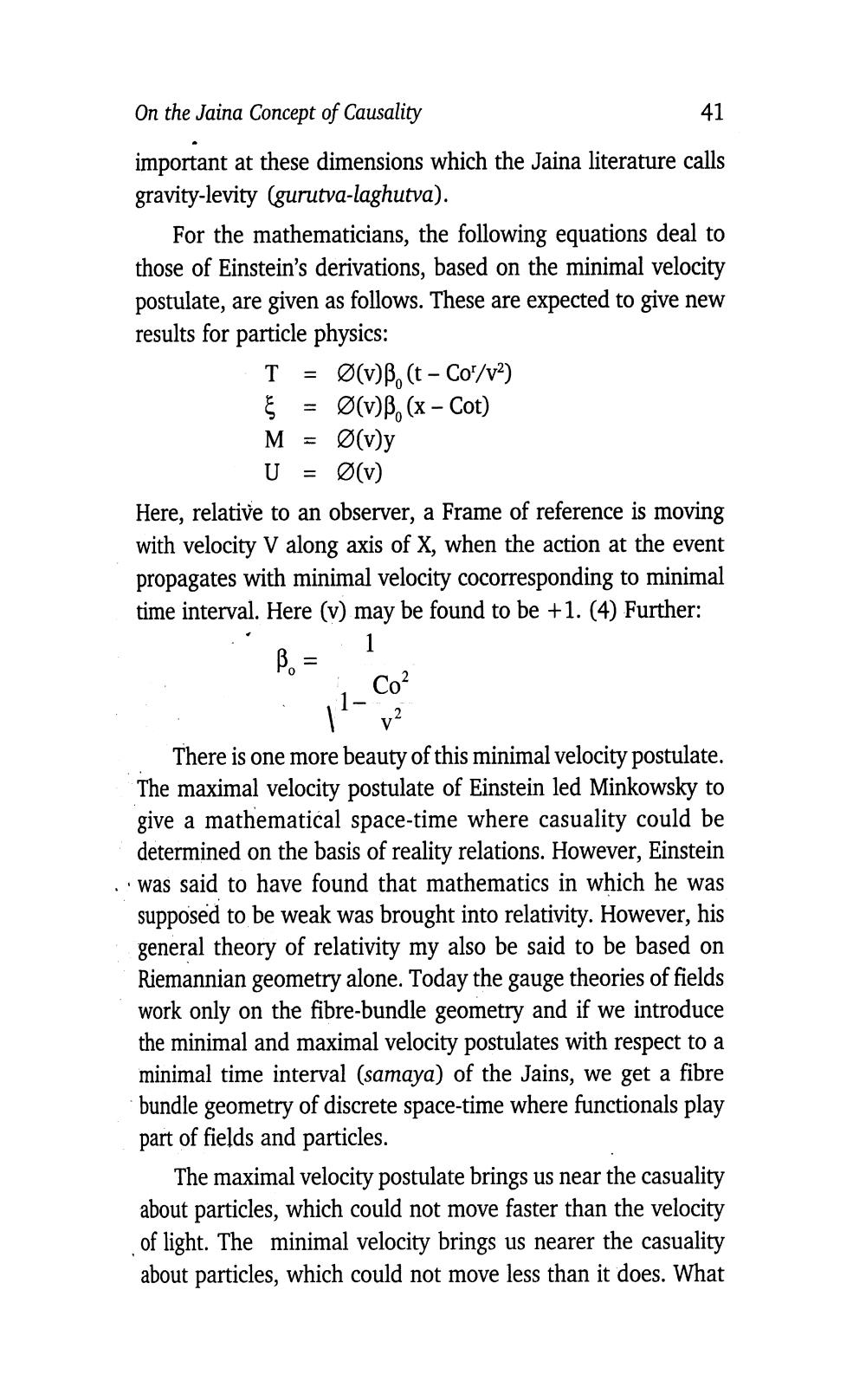________________
41
On the Jaina Concept of Causality important at these dimensions which the Jaina literature calls gravity-levity (gurutva-laghutva).
For the mathematicians, the following equations deal to those of Einstein's derivations, based on the minimal velocity postulate, are given as follows. These are expected to give new results for particle physics:
T = Ø(v)B. (t - Co"/v2) & = Ø(v)ß. (x - Cot) M = Ø(v)y
U = Ø(v) Here, relative to an observer, a Frame of reference is moving with velocity V along axis of X, when the action at the event propagates with minimal velocity cocorresponding to minimal time interval. Here (v) may be found to be +1. (4) Further:
B =
1
Co
11 v2 There is one more beauty of this minimal velocity postulate. The maximal velocity postulate of Einstein led Minkowsky to give a mathematical space-time where casuality could be determined on the basis of reality relations. However, Einstein · was said to have found that mathematics in which he was supposed to be weak was brought into relativity. However, his general theory of relativity my also be said to be based on Riemannian geometry alone. Today the gauge theories of fields work only on the fibre-bundle geometry and if we introduce the minimal and maximal velocity postulates with respect to a minimal time interval (samaya) of the Jains, we get a fibre bundle geometry of discrete space-time where functionals play part of fields and particles.
The maximal velocity postulate brings us near the casuality about particles, which could not move faster than the velocity of light. The minimal velocity brings us nearer the casuality about particles, which could not move less than it does. What




